A couple of months ago, Alvin wrote about his experience flying with Hong Kong Airlines from Tokyo to Hong Kong. Since then, I’ve seen increasing amounts of confusion about the airline, ranging from questions about if the airline is a low-cost carrier, to whether or not the airline is about to go out of business. Hence, I wanted to take some time to explore the state Hong Kong Airlines, specifically regarding its current situation and product offerings.
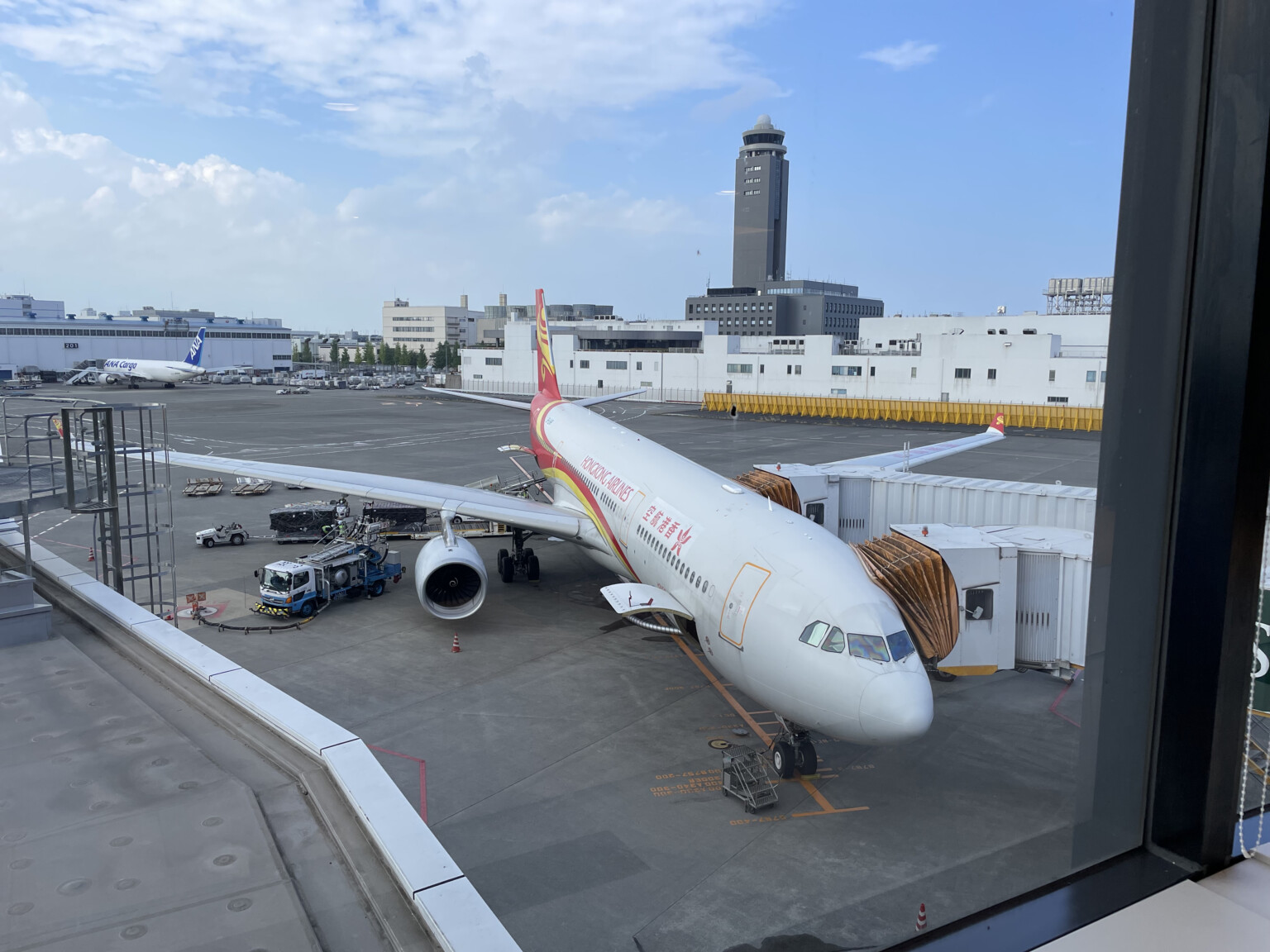
Hong Kong Airlines A330-300
Hong Kong Airlines’ Current Financial Health
In 2019, Hong Kong Airlines experienced a series of very public financial troubles. In an (absurdly simplified) nutshell, Hong Kong Airlines embarked on an expansion plan with the introduction of new services to North America and Australia, and took delivery of long-haul A350-900 aircraft.
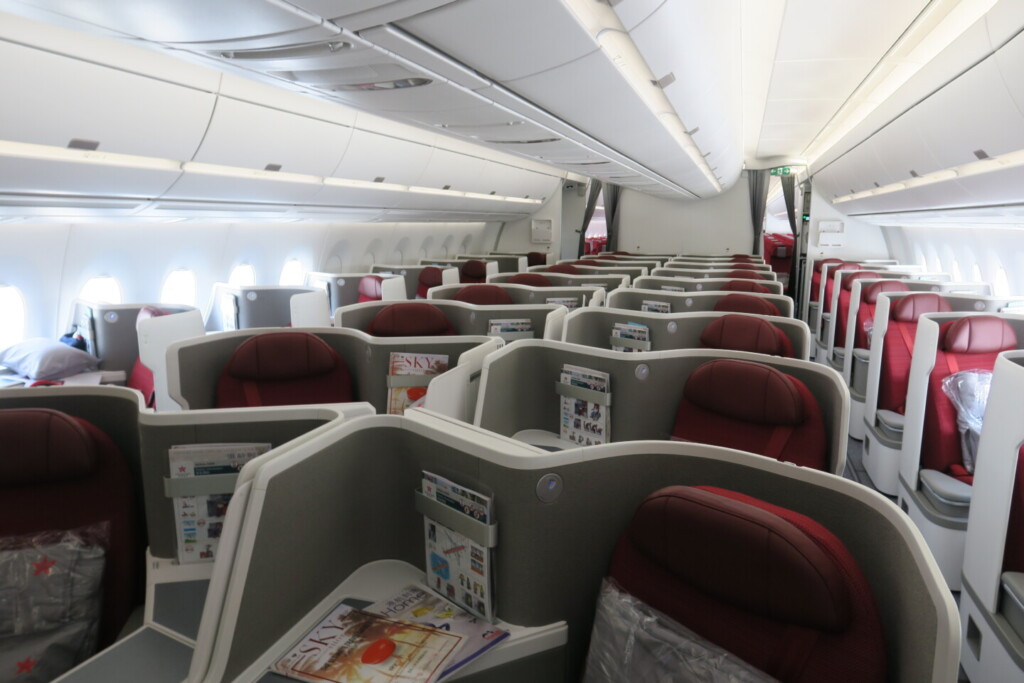
Hong Kong Airlines A350 Business Class
Unfortunately, the expansion was overly aggressive and largely unprofitable. Hong Kong Airlines attempted to compete against well-established rivals in the industry (e.g., Cathay Pacific, United Airlines, American Airlines), all of which had strong name recognition and had extensive route networks for passengers to connect on. Consequently, Hong Kong Airlines undercut its competitors. However, Hong Kong Airlines’ cheaper fares simply weren’t low enough to compete with the rock-bottom fares offered by mainland Chinese carriers during this time.
The financial failings of the HNA Group – Hong Kong Airlines’ parent company – put the airline dangerously close to bankruptcy. By late 2019, the airline was struggling to pay staff salaries and repay creditors, which almost led to the suspension of Hong Kong Airlines’ air operator certificate (or, license to operate). A series of drastic measures were taken to preserve the financial health of the airline, including the elimination of inflight service from all cabins and the removal of the carrier’s inflight entertainment systems. Hong Kong Airlines also suspended all long-haul services to the United States and Australia. At the peak of the crisis, the Hong Kong Airport Authority even seized several of Hong Kong Airlines’ aircraft.
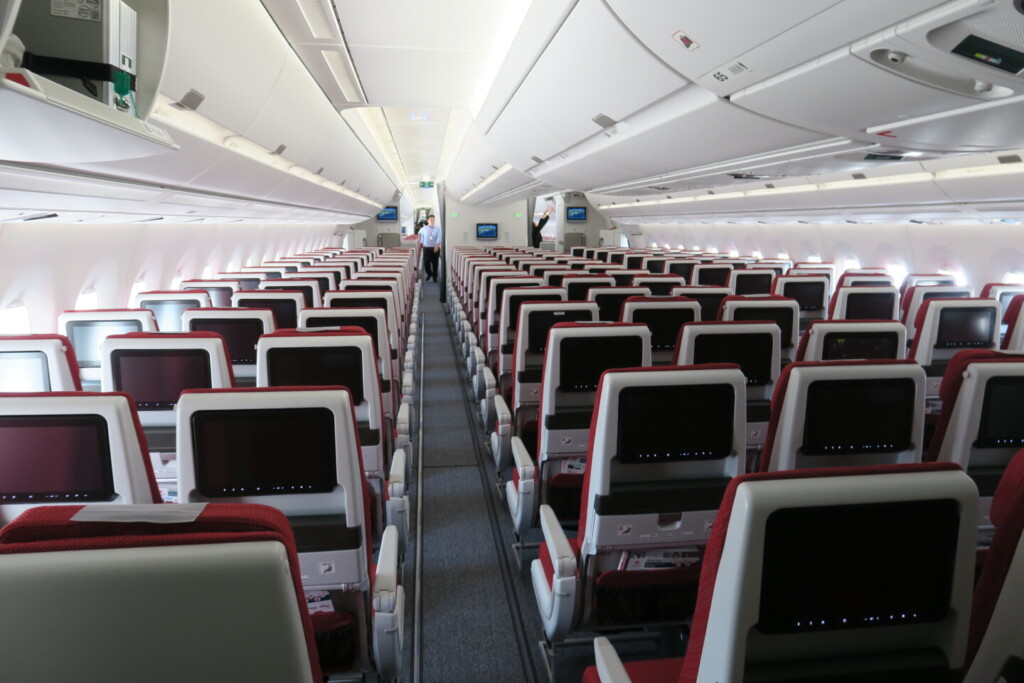
Hong Kong Airlines A350 Economy Class
The onset of the COVID-19 pandemic effectively shut down Hong Kong Airlines, which gave it an opportunity to restructure its business model and debt. In December of 2022 – which coincided with the initial removal of COVID-19 quarantine measures in Hong Kong – a restructuring plan was approved by Hong Kong and British courts. The plan included a re-payment arrangement with lessors, as well as an injection of HK$ 3 billion from an unnamed investor in return for a stake. The restructured airline aimed to maintain a fleet of 20 aircraft, less than half of Hong Kong Airlines’ pre-COVID fleet of 53 aircraft.
To summarise, Hong Kong Airlines has a concrete plan to return to financial health. While time will tell whether or not it works, it appears that the airline is planning on being self sufficient without the backing of its parent company.
Hong Kong Airlines’ Fleet & Route Network
Hong Kong Airlines has reoriented its route network to focus on short-haul, leisure heavy destinations. For example, so far in 2023, Hong Kong Airlines has added flights to Phuket and secondary Japanese cities including Nagoya, Fukuoka, Hakodate, and Yonago – all of which are popular vacation spots for Hong Kong-based travellers. This strategy appears to be working; Hong Kong Airlines reported a an average load factor of 90% on Japanese flights in the summer season.
According to airfleet.com, Hong Kong Airlines currently operates 17 active aircraft which includes:
- 11 A320-200 aircraft, split between a two-class and all-economy configuration.
- 6 A330-300 aircraft, with fully flat or angled lie flat Business Class seats and standard Economy seats.
Based on Hong Kong Airlines’ restructuring plan – the airline intends to operate up to 20 aircraft. However, rather interesting, Hong Kong Airlines currently claims that it has 31 aircraft, including 12 A320 aircraft, 10 A330-200s, and 9 A330-300 Aircraft on its website. I’m not too sure where this discrepancy is coming from, or if Hong Kong Airlines decided to keep some more aircraft given the rapid re-opening of Hong Kong.
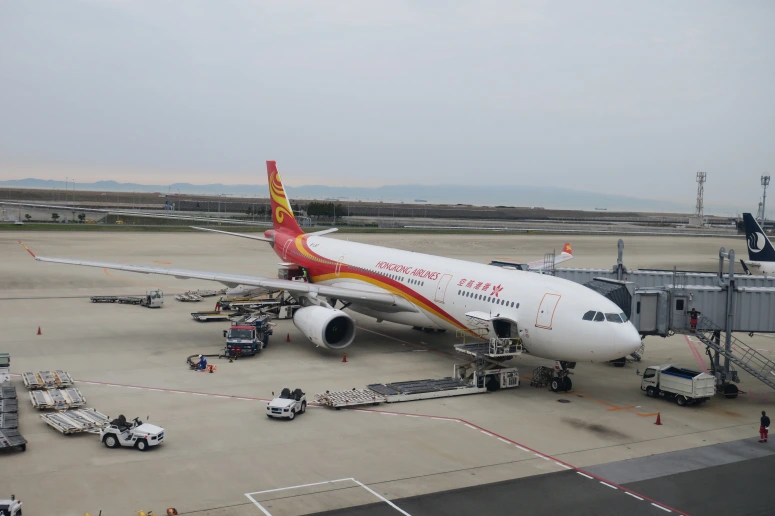
Hong Kong Airlines A330
Considering that the airline has focussed largely on expanding to leisure-heavy, short-haul destinations, Hong Kong Airlines may retire their entire A330-200 fleet. The -200 variant of the A330 seats less passengers and is suited to fly longer routes – neither of which are desirable traits for a short-haul focussed airline. Additionally, Hong Kong Airlines’ A330-200 fleet is split across three drastically different configurations. Retaining each of these aircraft types would be inefficient and costly from a standardisation standpoint.
Hong Kong Airlines also reported recently that it would be “actively introducing a new aircraft model to improve operational efficiency”, and was aiming to expand its fleet by 30% by the end of 2024. I’m a little surprised that the airline is looking to grow again so quickly after being forced to shrink to survive. My best guess is that Hong Kong Airlines will take delivery of some second-hand A321 aircraft. The A321 is a narrow-body aircraft, which comes with relatively lower operating costs. However, it carries more passengers than Hong Kong Airlines’ existing A320, making it a good fit for Hong Kong Airlines’ new leisure-focussed route network.
Hong Kong Airlines’ Pricing
As part of a new strategy towards leisure travellers, Hong Kong Airlines’ pricing undercuts well-established full service carriers but maintains a premium over Hong Kong-based low-cost carriers.
Let’s take the Hong Kong to Bangkok route as an example. On a sample round-trip routing from Hong Kong to Bangkok from December 20th to December 24th, a pricing run-down for Hong Kong-based airlines is as followed:
- HK Express: HKD 2075 (no checked baggage)
- Greater Bay Airlines: HKD 2272 (no checked baggage)
- Hong Kong Airlines: HKD 2059 (no checked baggage); HKD 2479 (with checked baggage)
- Cathay Pacific: HKD 3317 (one checked bag – 23kg)
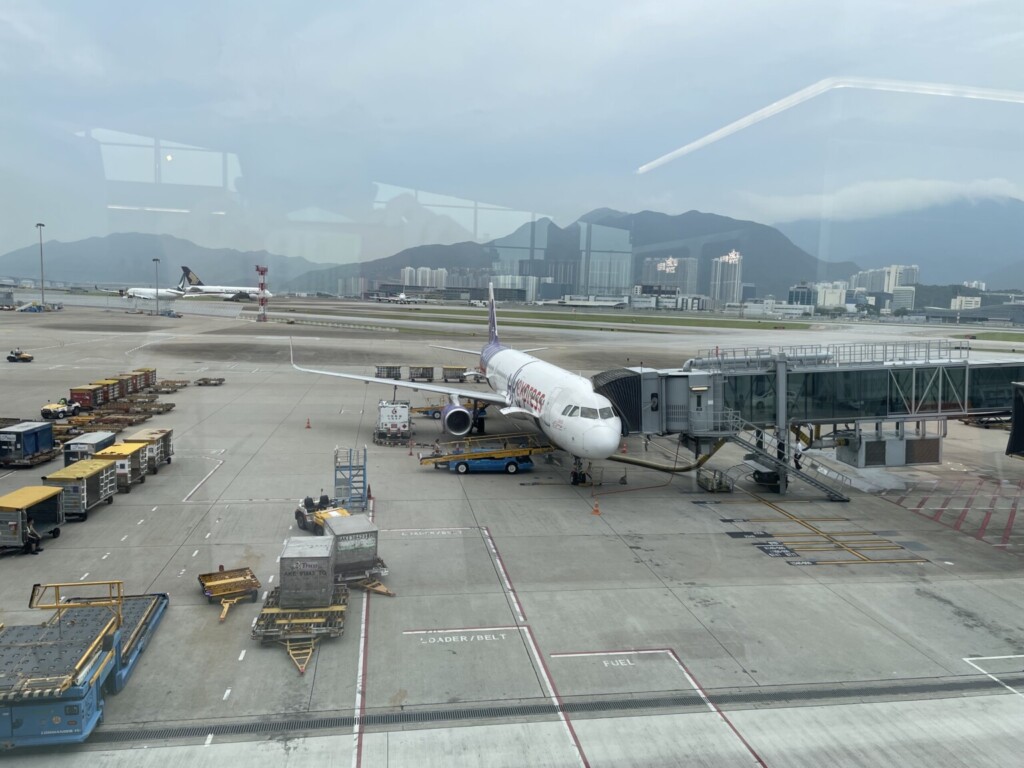
Hong Kong Airlines’ prices are often similar to or slightly higher than HK Express’ prices
Hong Kong Airlines is pricing flights similarly to or slightly more than low-cost competitors such as Greater Bay Airlines and HK Express – but is offering a better ground and inflight experience. Meanwhile, it’s also attempting to undercut Cathay Pacific’s full-service offering. In other words, it appears that Hong Kong Airlines is trying to operate under a “hybrid” airline model.
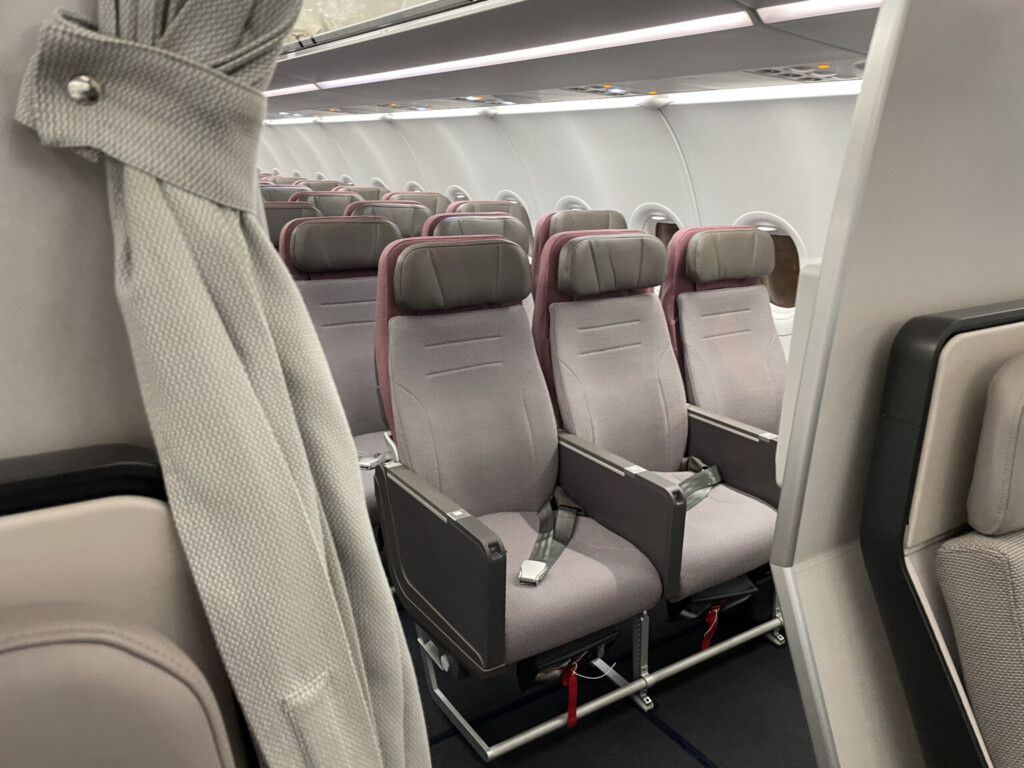
Cathay Pacific A321neo Economy Class
However, I’m curious if this strategy is feasible in the long-term. In some instances, Hong Kong Airlines’ hand-luggage only fares are actually cheaper than HK Express and Greater Bay Airlines – both of which make a significant amount of revenue from ancillaries (e.g., inflight food, seat selection, priority check-in and boarding…)
Meanwhile, in Business Class, Hong Kong Airlines has maintained its pre-pandemic proposition of offering an “affordably luxurious” experience. Hong Kong Airlines consistently offers the cheapest Business Class option across most markets – which is impressive considering that the airline offers fully flat beds on its A330-300 aircraft.
The Hong Kong Airlines Ground Experience
Hong Kong Airlines’ ground services have been pared back slightly to reflect a “hybrid” airline.
Perhaps most notably, Hong Kong Airlines has started selling hand baggage only fares in addition to fares with checked baggage, which makes sense. This is major difference from all full service carriers in the region – which universally offer free checked baggage with all ticket types. However, considering the leisure focus of the “new” Hong Kong Airlines, these changes seem fair. It’s also worth noting that Hong Kong Airlines still consistently offers lower fares than Cathay Pacific on tickets with checked-baggage included.
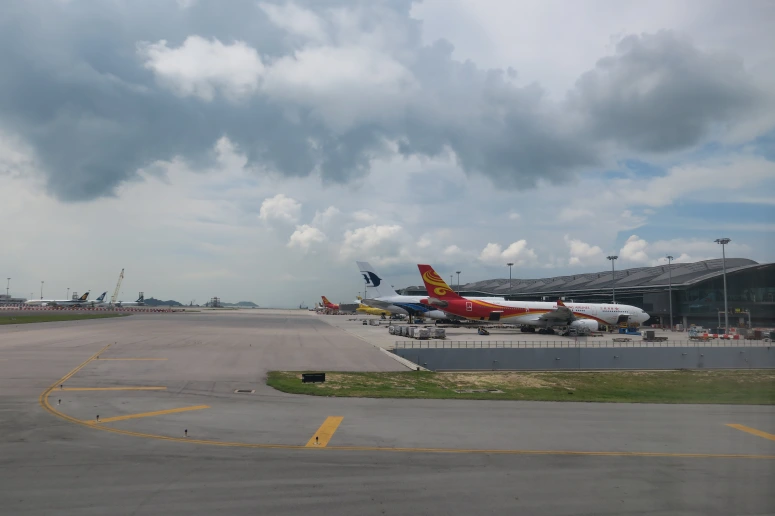
Hong Kong Airport Midfield Terminal
As of the 31st of October, 2023, Hong Kong Airlines resumed flying from Hong Kong Airport’s Midfield Terminal (Gates 200-230). This is a net positive – while the Midfield Terminal doesn’t have all of the bells and whistles of the main terminal at Hong Kong Airport, it is easily accessible and allows Hong Kong Airlines to coordinate its ground services at a centralised location.
Another plus for travellers is that Hong Kong Airlines’ Club Autus lounge has reopened. While I’m not sure whether dining offerings in the lounge have been paired back, the space is beautiful and the re-opening signals that Hong Kong Airlines is serious about tapping into the premium travel market.
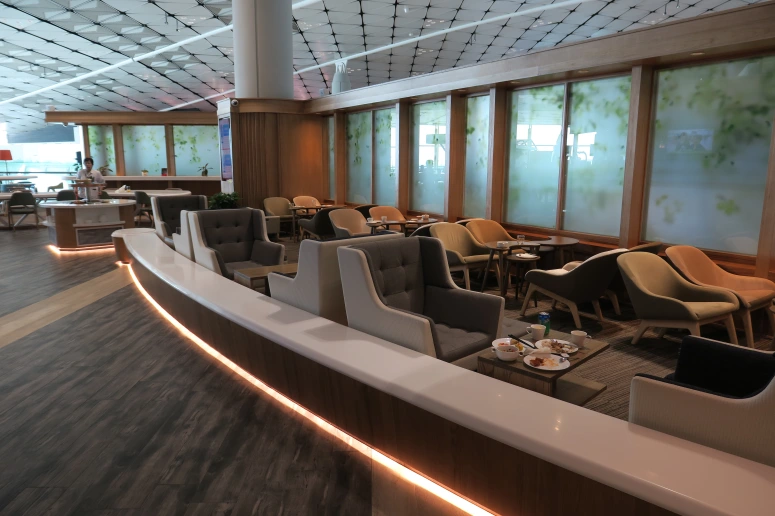
Hong Kong Airlines Club Autus Lounge
Hong Kong Airlines’ Inflight Services
Hong Kong Airlines has pared back its service significantly from its 2018 heyday, with the introduction of upgraded meal services and an upgraded product on long-haul A350-900 aircraft. Perhaps the most notable change is that Hong Kong Airlines has cut back on inflight entertainment. Specifically, only a small portion of the airline’s fleet has had its inflight entertainment system reactivated. That being said, while other inflight services have been cut in comparison to pre-pandemic times, I still feel that Hong Kong Airlines offers great value for money with its service offerings.
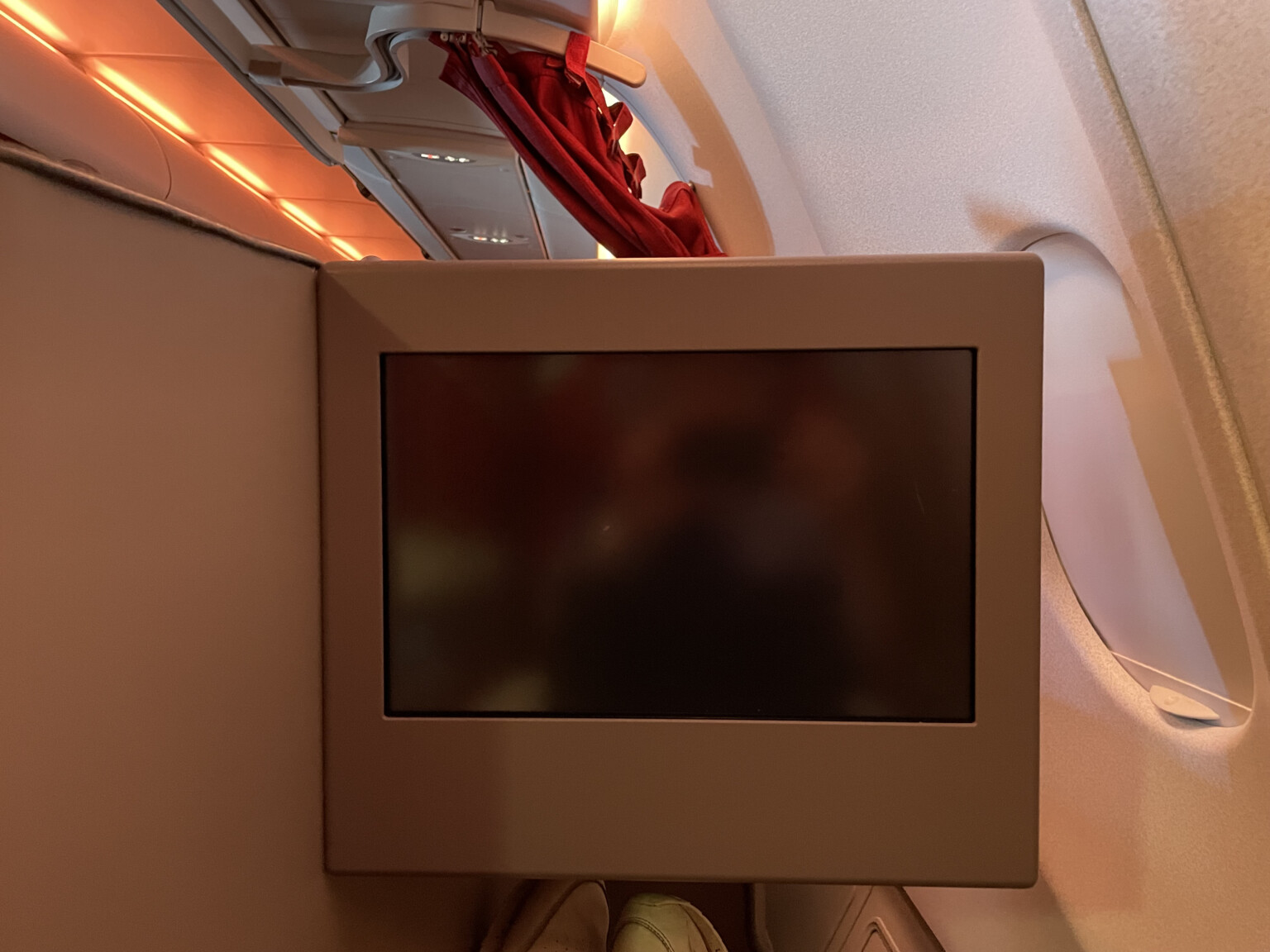
“And I’ve got a blank space baby…”
Hong Kong Airlines’ Business Class
Alvin’s written a pretty comprehensive update on Hong Kong Airlines’ updated A330-300 Business Class product, so I’d check that out. However, to summarise:
- The A330-300 has a slightly outdated but perfectly comfortable fully-flat Business Class with direct aisle access and power outlets.
- The meal service offering has visibly been cut back (e.g., the elimination of printed menus), but is still high-quality and better than what you’ll get in any Economy experience.
- The service onboard was excellent.
- The product is – above all – exceptional value for money, especially when compared to the extortionate prices charged by many full-service competitors on the route.
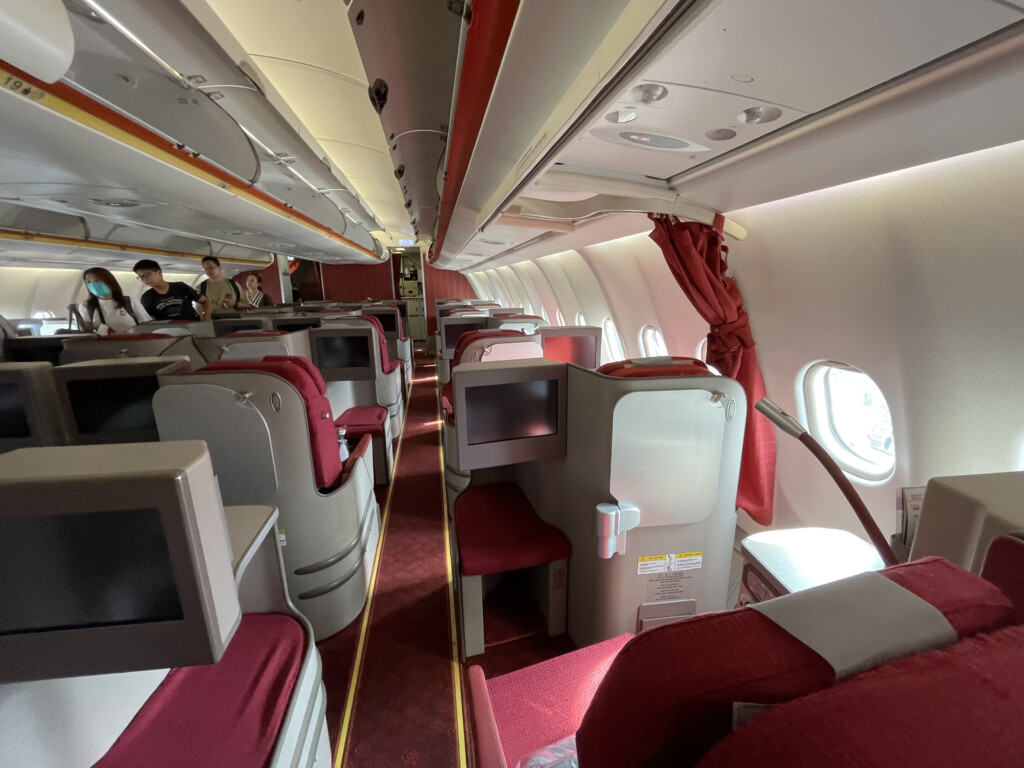
Hong Kong Airlines A330 Business Class
Meanwhile, the airline’s A320 aircraft offer a standard Business Class recliner, which appears to be comfortable enough. Again, despite the relatively worse inflight product – the old adage of “you get what you pay for” very much applies here. It’s not industry leading by any means, but certainly better value-for-money than other competitors.
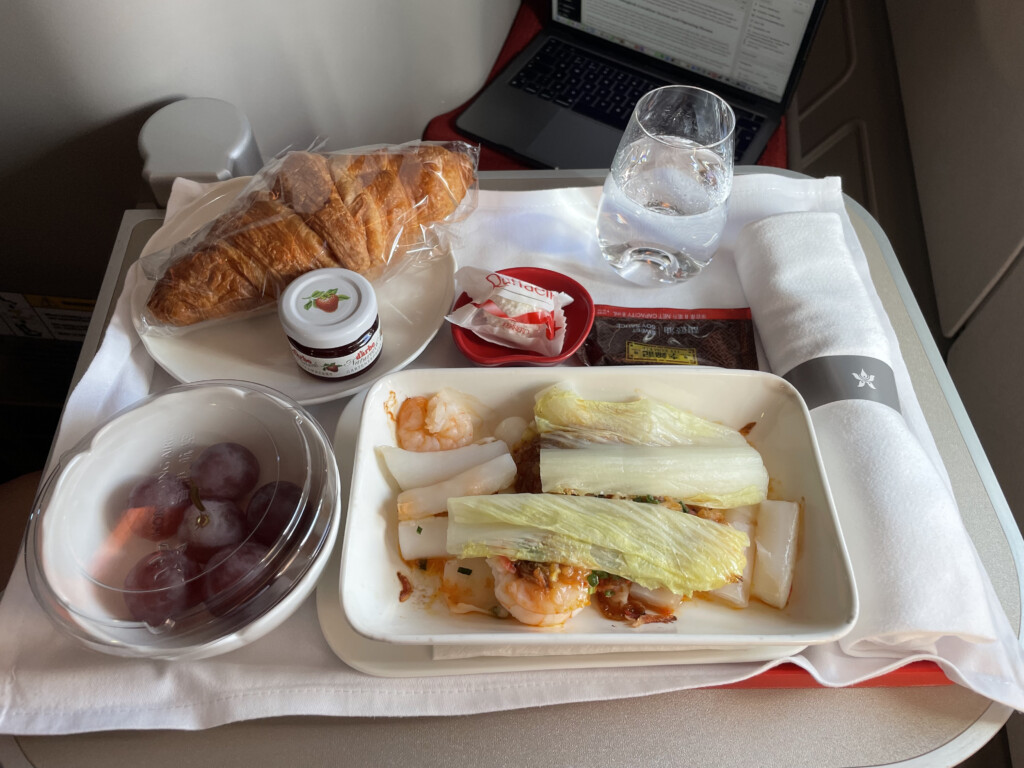
Hong Kong Airlines Business Class Meal
I don’t intend to criticise full-service carriers for offering more expensive products. After all – if they can charge a significantly higher price and find willing passengers, that works in their favour. That being said, Hong Kong Airlines – rather smartly – knows it cannot compete on product, so is focussing on offering a good-enough experience for a very good price.
Hong Kong Airlines’ Economy Class
Hong Kong Airlines’ Economy experience – on the other hand – has been pared back slightly more compared to pre-pandemic levels.
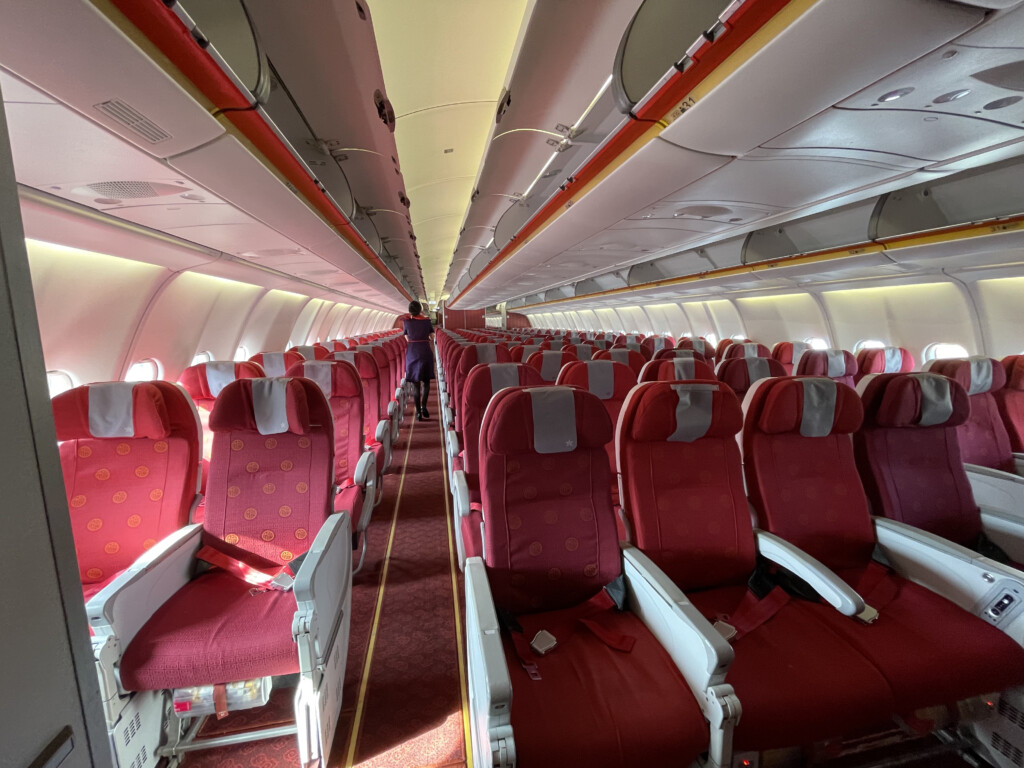
Hong Kong Airlines A330 Economy Class
All passengers on short-haul flights receive a complimentary snack (either a hot pastry bun, or a pack of popcorn), a bottle of water, and non-alcoholic drinks on request.

Source: Hong Kong Airlines
Passengers can also pay HKD 50-80 to replace the complimentary snack with a hot meal. This pricing is in competitive with what HK Express charges for meals (although, it is worth considering that HK Express doesn’t offer any sort of free food or drinks).

Source: Hong Kong Airlines
As for the hard product:
- Passengers on A330-300 aircraft get an adjustable headrest for comfort and in-seat power.
- Passengers on A320-200 aircraft get a bare-bones, relatively poorly-padded Economy seat with no in-seat power. Legroom is – however – pitched at 29-33 inches across the fleet, which is more than you’ll get on a low-cost carrier.
Again, however, Hong Kong Airlines’ pricing is still significantly lower than full-service competitor Cathay Pacific. While Cathay Pacific’s industry-leading Economy Class seat and improved meal service (include free alcohol) are nice to have on a short hop, I’m not convinced that this improved offering will command a premium from the average leisure traveller without elite status.
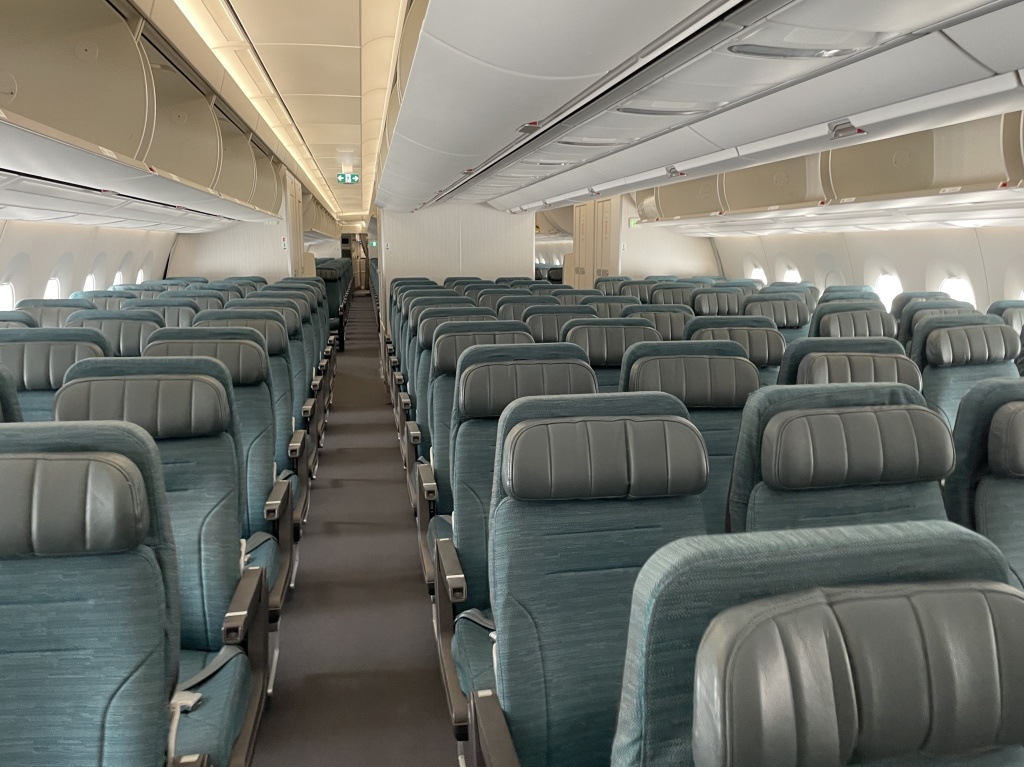
Cathay Pacific A350-1000 Economy Class
To summarise this section, Hong Kong Airlines doesn’t offer best inflight product airlines, but it’s certainly more than good enough considering the prices they charge.
Bottom Line
After a tough few years, Hong Kong Airlines is looking to make a comeback. The airline has abandoned its long-haul aspirations, shrunk its fleet, and focussed its routes on the Hong Kong leisure market. From a product perspective, Hong Kong Airlines has made major cuts to its inflight services in Business and Economy but has stopped short of fully embracing a low-cost model. Hong Kong Airlines’ new positioning as a “hybrid” carrier is reflected in its pricing, which is typically somewhere between low-cost carriers and full-service carriers.
Based on the past year, it looks like Hong Kong Airlines is recovering well. I’m excited to see the future strategy that the airline adopts, and hope to give them a try sometime soon.
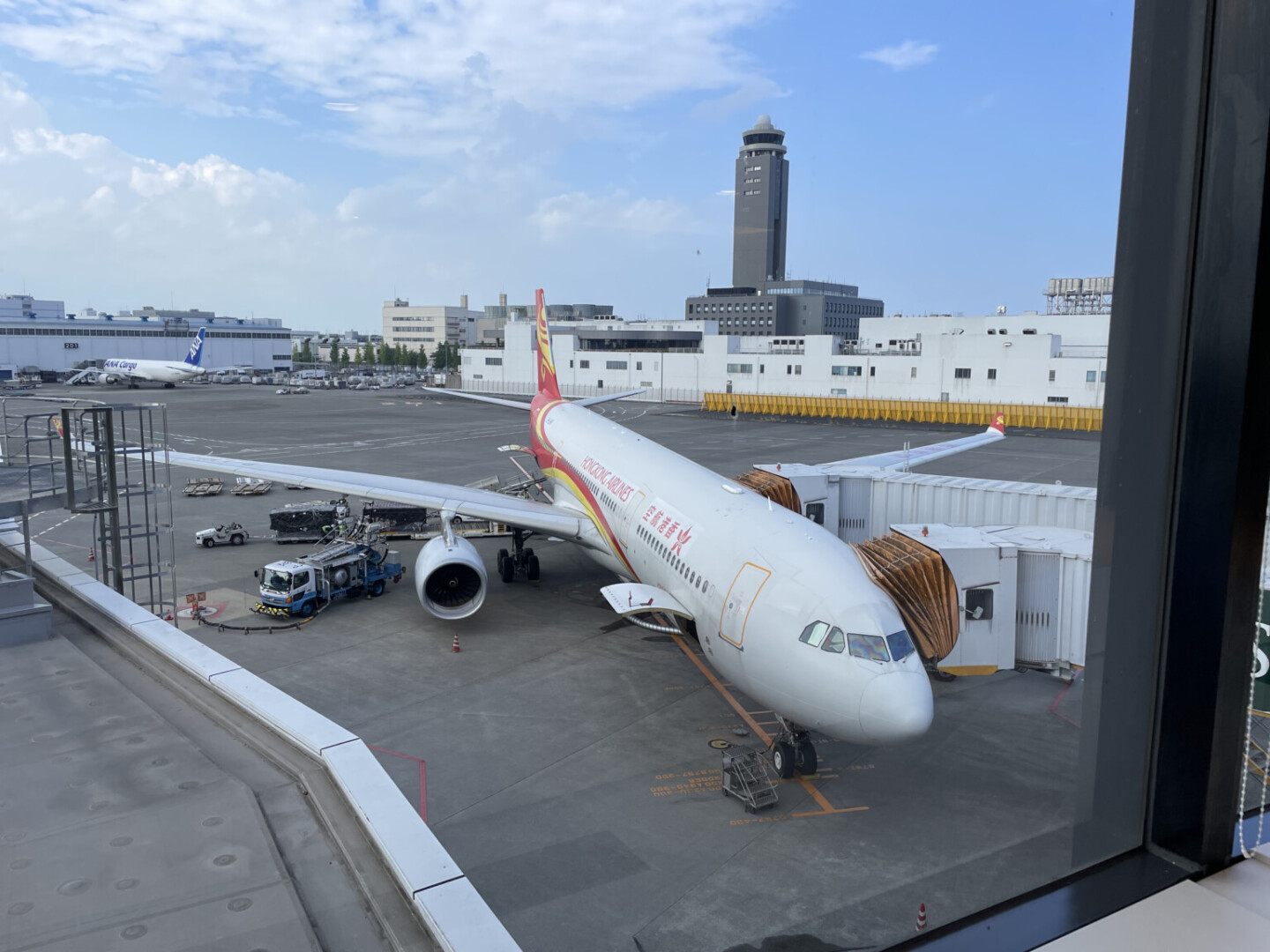
I flew them as part of a UA ticket in business class recently. The leg on HK Air was from Hong Kong to BKK and return. It was fine. Nothing to write home about re food/seat and obviously no entertainment but for a 2.5 hour flight it was good. The biggest issue for me was an inability to confirm I had a ticket with them and also not being able to pick a seat bc of this. The confirmation code I got from UA was not usable on the HK website bc they only use the ticket number, which since I booked it on UA wasn’t going to work on a HK Air site. The UA 1K desk tried repeatedly to get ahold of someone at HK Air and could not. Neither could I. It was all up in the air until two days before the flight when I suddenly had a seat assigned. Not ideal when you are traveling for work. But it is thousands cheaper for me to use that route than any other UA route to BKK so I’ll probably use it again in the future.